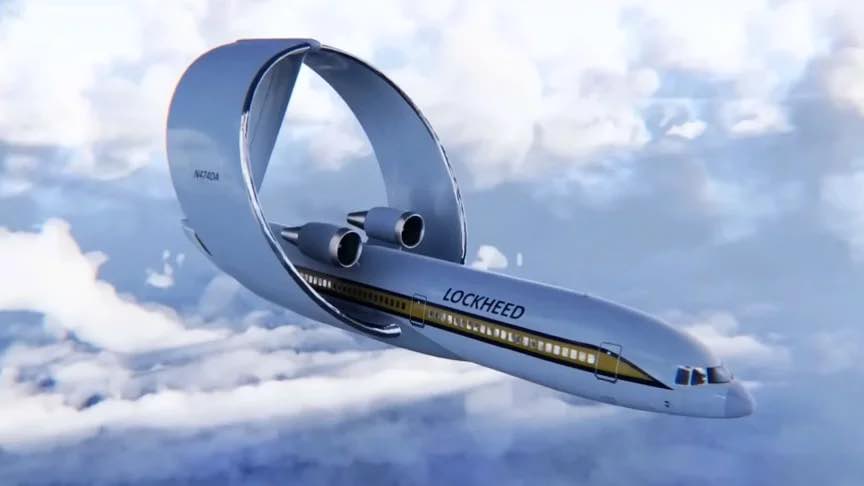Picture for a moment, an imaginary aircraft with wings that form a complete circle around the plane. Now stop imagining, because this was a very close reality not too long ago. A circular wing, or more precisely, a “ring wing” was a concept design by Lockheed (aptly named the Lockheed Ring Wing). While it never made it to the skies, the idea behind this unique design has fascinated aviation enthusiasts for years. Let’s take a look at the Lockheed Ring Wing, its roots, and why it never got off the ground.
The Lockheed Ring Wing

The concept of the Lockheed Ring Wing isn’t entirely new; it touts its origins from the early days of aviation. The French were some of the first to experiment with closed-wing designs. One of the earliest examples was the Bell Riot aircraft, which featured two circular wings mounted one in front of the other. Later versions even replaced the forward wing with a biplane design, but the Bell Riot was damaged beyond repair during its initial tests.1
The Lockheed ring wing was supposed to be a commercial transport envisioned to be a rather large plane, measuring 52 meters long and a wing circumference of 7.4 meters (just under 25 feet). The wing would attach to the main body of the plane about halfway back and arch back to join the tail, reaching a total height of up to 23 meters (75 feet).2
One of the most interesting parts of this design was its potential for fuel efficiency. The aircraft could accommodate up to 120 passengers and was particularly well-suited for commuter routes that didn’t require high altitudes. Not needing to get as high means a more streamlined flight path, therefore less fuel being used (not to mention more fuel is usually burned in a climb so if you’re climbing for less time, you’re burning even less fuel). The design also offered some unique aerodynamic advantages. Because there are no conventional wingtips, the wingtip vortices they usually cause in flight are minimized. This results in the wing generating more lift, allowing for shorter runways, reduced fuel consumption, and minimal impact from crosswinds.
A Flightless Bird
Despite its innovative design and potential advantages, the Lockheed Ring Wing faced several challenges that kept it grounded. One of the main issues was increased drag, which essentially canceled out the fuel savings gained from the increased lift. The design also required meticulous engineering to avoid aerodynamic issues like flutter (inertia-induced vibration) and boundary layer separation (which pushes the plane down). Also, the concept was not as well-understood and had not been around as long as conventional aircraft designs, so it would be a riskier and more expensive endeavor to try. Eventually, funding became an issue, with investors hesitating to back a project with so many unknowns, so the dream was never realized.
However, the Lockheed Ring Wing aircraft remains an intriguing chapter in the history of aviation design to look back on. While it never was able to take flight, its unique approach to solving some of aviation’s long-standing challenges makes it a subject of ongoing interest. Who knows? With advancements in technology and aerodynamics, we might one day see an aircraft like it soaring above us. Until then, it remains a fascinating “what could have been” in the world of aviation.